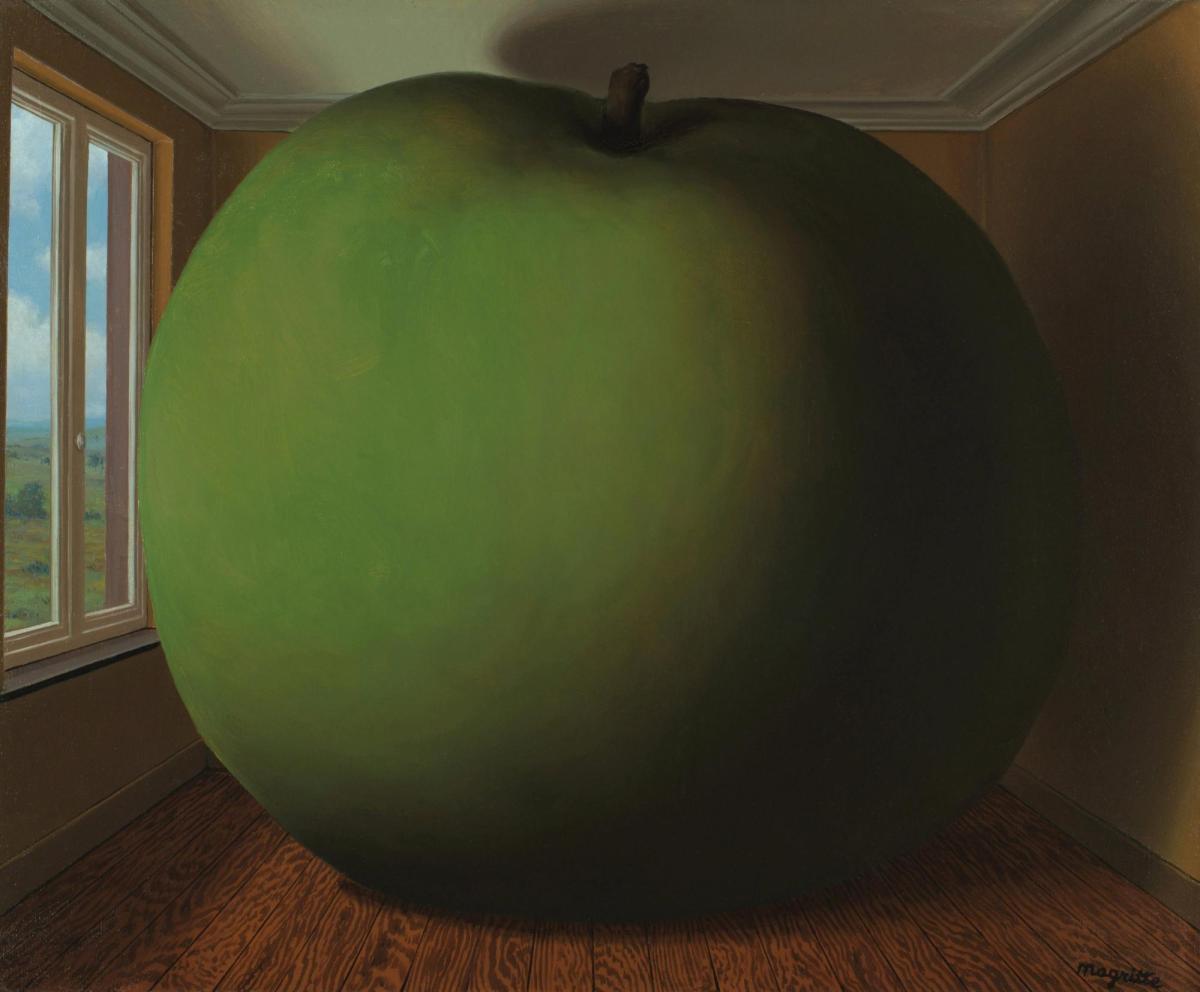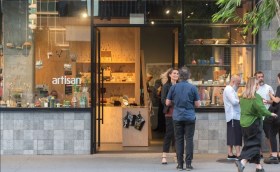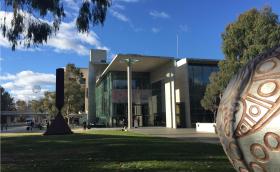Surrealist art espoused the lofty aims of delivering freedom. Art had not only the ability, but the obligation, to confront conventional ideas of reality and accepted wisdom. One of the leading proponents of the movement, Belgian artist René Magritte (1898 – 1967), is celebrated in this summer blockbuster exhibition at the Art Gallery of New South Wales (AGNSW).
Magritte’s paintings play with the idea of mystère, which in the original French conveys a sense of something that is not understood. Over more than half a century, the artist explored this concept via a series of ‘snapshots of the impossible’, with everyday objects – a pipe, clouds, a green apple, businessmen in bowler hats – placed in contexts that make the viewer question reality.
Many of Magritte’s images present uncomfortable viewing, with the viewer not quite sure what they are looking at or what is being communicated. The onus is to challenge their own feelings and preconceptions about the world.
A vivid example of this is The Listening Room (1957), which presents an uncompromising image of a verdant green apple squeezed into an impossibly small room. The apple’s peel presses uncomfortably against the walls and ceiling. And yet, just outside the window, there are open fields and sunshine. Magritte’s agent told the artist that every time he looked at the image he felt ill, to which Magritte responded that art should make the viewer feel uncomfortable.
Magritte referred to himself as a ‘painter of ideas’, aiming to challenge representation and reality. A celebrated example is The Treason of Images, painted in 1928. It depicts a simple tobacco pipe set against an innocuous beige background. Handwritten beneath the image are the words “Ceci n’est pas un pipe”, which translates as “This is not a pipe”. The art historian Robert Hughes describes how the text and image were inspired by the architect Le Corbusier’s use of a pipe as an example of simple elegant design. Magritte pointed out that the image of a pipe was something different to the real thing, a representation rather than reality. The theme is echoed in a self-portrait from 1929, La Lampe philosophique, in which Magritte’s nose morphs with the pipe he is smoking.
Magritte returned to the same motifs numerous times. One of the most recognisable of these is the image of the man in the bowler hat, which originally featured in an image from 1926, The Menaced Assassin. In his later years, the motif was used to such an extent that it became symbolic of Magritte’s work and ideas, able to be represented through a simple silhouette.
The effectiveness of Magritte’s simple symbolism meant many of his motifs became cultural icons. The green apple, for instance, apparently inspired the Beatles record label logo.
Magritte told Dominique de Menil that he wanted his art to explore the questions of who we are and what we are doing on Earth. Towards the end of his career he said it was “reassuring to know that there is more than what one knows”. In this age when it appears to be increasingly the case that nothing is as it seems, this Magritte exhibition is timely. It challenges us to ask why we interpret what we see in the way that we do, how our preconceptions shape our judgement and the possibilities for an alternative vision of reality.
The Art Gallery of New South Wales’ exhibition is separated into six rooms, each themed around a particular period of Magritte’s life, from his experimentation with cubism early in his career to his later work where he began to play with ideas of representation and reality.
It includes over 100 images, drawn from an impressive list of international collections, including the Magritte Foundation in Brussels; the Menil Collection in Houston, Texas; the Museum of Modern Art in New York; the National Gallery of Art in Washington DC and numerous private collections. Many of the works have not previously been seen in Australia, and the exhibition is testament to the remarkable ability of AGNSW, and the exhibition’s curator Nicholas Chambers, to persuade international art museums and collectors to share their work.
Read: Exhibition review: Infinite: Dobell Australian Drawing Biennial 2024, AGNSW
The Magritte exhibition can be viewed either as a solo show or as part of three-ticket Art Pass, which combines it with two other exhibitions in the Sydney International Art Series – an exhibition by Cao Fei opening at the AGNSW at the end of November and an exhibition of work by Julie Mehretu at the Museum of Contemporary Art Australia (MCA). The exhibition is accompanied by a series of programs of lectures that explore the artist’s work and influence.
Magritte
Naala Nura, south building, Lower Level 2, Art Gallery of New South Wales
Magritte will be on display until 9 February 2025; ticketed.






